49 people found this helpful
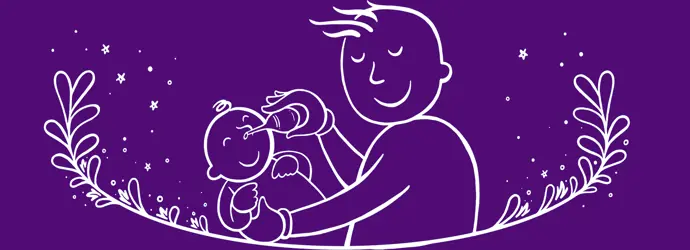
Endless nappies, non-stop feeds, constant play, cuddles, and care – welcome to new parenthood! And between nappies, night feeds, and absolutely not leaving the house (yet!), your bundle of joy has somehow developed a cold and snotty nose. It’s no wonder that you haven't a moment left for yourself! But it does get easier – as your little one finds their own feet (literally!) you'll find moments for you, too. (Top tip: take them!) But right now, you’re cleaning baby’s nose, so here are some tips on unblocking a newborn’s nose!
Now, we know many parents have probably turned to Google, desperately searching ‘how to clean a baby’s nose?’ hoping for some miracle way of unblocking a newborn’s nose. But you can close your fifteen tabs right now because we’ve got 4 simple tips on how to unblock a baby’s nose:
- Thinning the mucus.
- Extracting the mucus.
- Loosening up the mucus.
- Wiping your baby’s nose.
Below, we’ll also show you how to blow a baby’s nose and how to blow a child’s nose when they’re a bit older. And remember, you can always reach out to your child’s doctor with any questions you may have, they have a persistent fever for more than 5 days5 —or just to get a little peace of mind.
How to clear a baby’s blocked nose - 4 easy steps
Like most adults, when your baby has the flu, a blocked nose is a common symptom, usually due to normal mucus that collects in the nose. But unlike adults, who can just roll over in the middle of the night, grab a tissue, and blow, it can be difficult for a baby to clear their nose at such a young age!1 That’s why we need to know how to do it for them.
Dr Isabelle Benard says: "The only way a baby can unblock their nose themselves is by sneezing. It’s also very important for a baby’s nose to be clear as this is mostly commonly how they breathe, particularly when they are feeding. They do not breathe as well through their mouths, as adults may do when they have a blocked nose."
So, here are your tips on cleaning your baby’s nose mucus:
1. Start by thinning the mucus
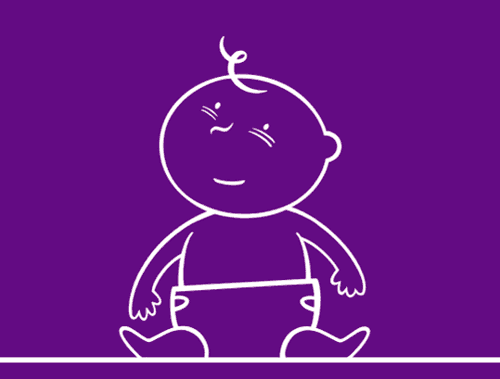
This allows the mucus to move through the nasal passages more easily. You can do this by keeping your baby hydrated or by putting a drop of saline in each nostril while your baby is lying on their back.2
2. Try extracting the mucus with a bulb syringe (also known as a nasal aspirator)
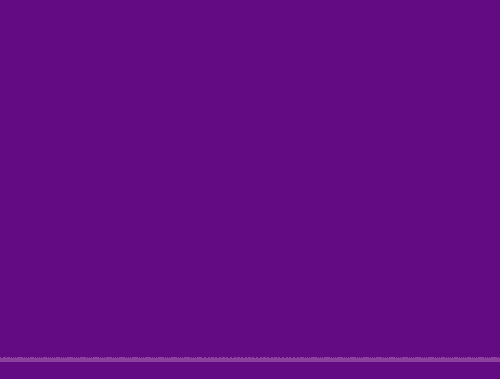
Start by squeezing it to depress the bulb, and then gently insert it into the middle of one of your baby's nostrils. Release the bulb to open it, and it will suck in air and mucus. Carefully remove it and repeat the process for the other nostril. And don’t forget to clean out the nasal aspirator thoroughly in some warm soapy water when you’re finished.3 This action itself could make your baby sneeze, which will also help unblock their nose.
3. Utilise steam
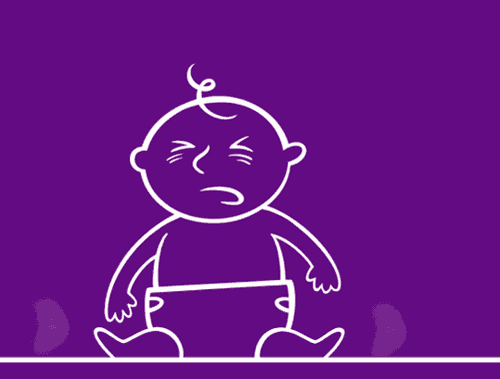
If the blockage persists, and you still need to figure out how to clear a baby’s blocked nose, try sitting in an upright position with your little one in a steamy bathroom for a few minutes.4 When the mucus has loosened up, repeat step 2 in your handy guide on how to clean out baby’s nose blockages.
The reality of having a newborn means you’re probably missing out on ‘me-time’, which is why it’s important to savour the few peaceful moments you do get when they’re sleeping! Luckily, you can rely on Cushelle’s soft toilet paper with delicately scented core* for a pampering (and peaceful) moment that’s just for you, every time you go, and whether baby is, or isn’t, in the room with you.
4. Finish by wiping your baby's nose
And that’s it! Your baby’s nose is unstuffed and hopefully, the two of you can now get some well-deserved cuddles in!
Don’t forget to download our fun illustrative guide for more information!
How to blow a baby’s nose
Now that you know how to deal with a blocked nose, let’s discuss the opposite situation: how to help with a runny nose. Runny noses can result in a near-constant stream of mucus, which can gather at the opening of your baby’s nostrils. This can block the airways and become uncomfortable, or even painful.
If you want to know how to clean baby’s nose mucus that has become sticky at the edge of the nostrils, try wiping around the nose frequently with a gentle wet wipe. Knowing how to unblock baby’s nose mucus in this way will prevent it from getting crusty and sore.
Dr Isabelle Benard says: “The skin around the nostrils can become quite sore and inflamed when babies need their nose wiped frequently. Try applying some clear petroleum jelly under your baby’s nose to reduce irritation.”
How to blow a child's nose when they’re a bit older
One of the first steps your child will take on the road to developing healthy hygiene is learning how to blow their nose themselves. It doesn’t always come naturally to them, so knowing how to blow a child’s nose starts with showing them the basics: how to breathe out of their nose. Here are some fun tips on how to blow a child’s nose:
- Encourage kids to discover their nasal passages by asking them to snort out like a dragon or like a bull while you hold a tissue underneath.
- Put a cold mirror under their nose and show them how they can make white patterns of condensation on the mirror if they breathe out through their nose.
- Light some birthday candles and see if they can blow them out by breathing out only through their nose. Always supervise carefully here and make sure their face and hair stay clear of the flame.
Dr Isabelle Benard says: “Learning this skill of blowing through the nose (rather than sniffing) is really important for children and will reduce the risk of developing ear infections or glue ear (a build-up of sticky fluid).”
The point is, there are loads of ways you can make this lesson in basic hygiene fun for your little ones! Keep in mind, that we might be experts at nose-blowing, but we’re not medically trained. So, if your little one’s blocked or runny nose persists, make sure you book an appointment with your doctor.
Remember, practice makes perfect—and that goes for both you and your tiny human! With a little positive reinforcement and a few imaginative activities to make this lesson in hygiene fun, they’ll be well on their way to developing healthy habits.
Try these tips at home and before you know it, you’ll know how to clear a baby’s blocked nose like a pro. And then, just when you’ve mastered this less-than-glamorous skill, your child will start blowing their nose all on their own.
*To verify claims, please email verify.uk@essity.com for full verification details.
Sources:
1 Blocked Nose in Babies, NHS Children’s Services
2 Nasal congestion in infants and children: a literature review on efficacy and safety of non-pharmacological treatments, National Library of Medicine
3 Suctioning Your Child’s Nose, Children’s Hospital of The King’s Daughters
4 What to Do For Your Baby’s Stuffy Nose, University Hospitals
Download & Go Guides & Tools
How to Blow a Baby's Nose
Learn how to blow a baby's nose and how to teach nose blowing to older children with this guide on how to clean baby nose blockages.



